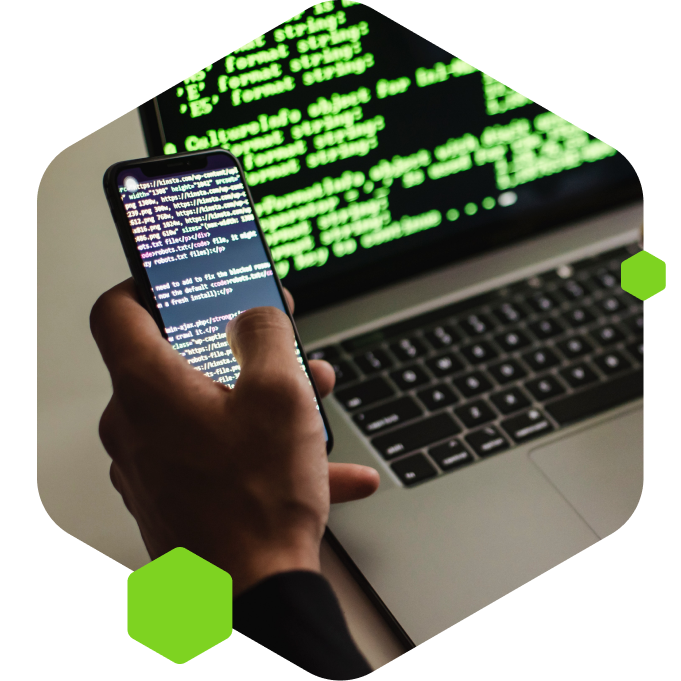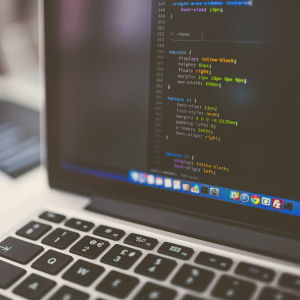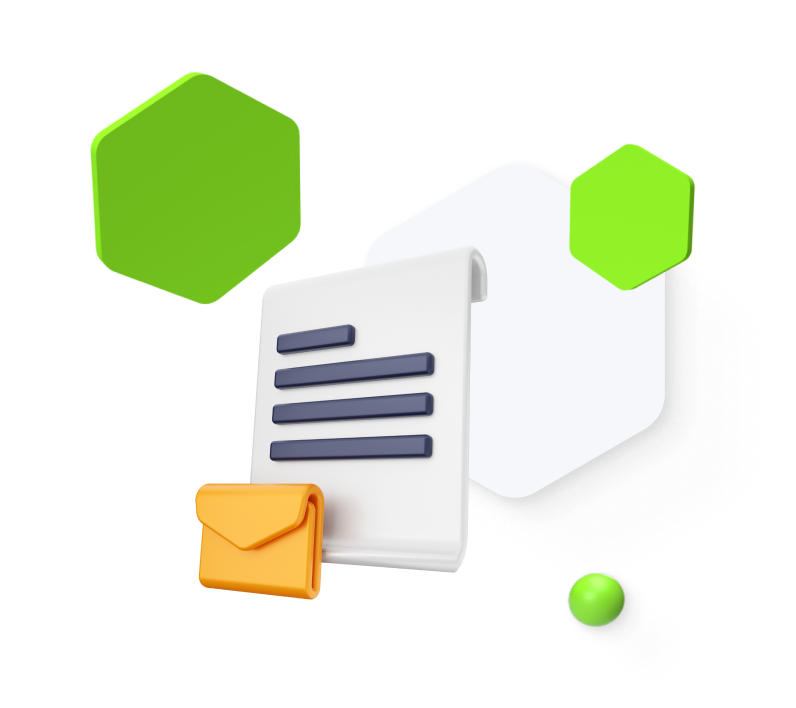Technologie
Flutter Development - build responsive and adaptive apps


Bring your app ideas to life with Flutter.
Flutter is an open-source mobile application development framework created by Google. It was released in 2017 and has quickly become a popular choice among developers for building beautiful, high-performance mobile apps for both Android and iOS platforms.
One of the key benefits of Flutter is that it allows developers to write code once and deploy it across multiple platforms without compromising on the performance and user experience. Flutter uses a reactive programming model, which means that the UI of an app automatically updates based on changes in the app’s data.
Why Flutter?
Another major advantage of Flutter is its hot reload feature, which allows developers to see the changes they make in the code in real-time, without having to restart the app. This makes the development process much faster and more efficient.
Flutter also offers a rich set of pre-built widgets and tools, making it easy to create beautiful and engaging user interfaces. Moreover, Flutter has a thriving community and a wealth of resources, making it an ideal platform for both beginners and experienced developers.
Overall, Flutter is a versatile and powerful platform that offers developers a great combination of speed, flexibility, and ease of use, allowing them to build stunning and performant apps quickly and efficiently.

What is Flutter development?
Flutter development refers to the process of building mobile applications using the Flutter framework. Flutter is an open-source mobile application development framework created by Google that allows developers to build high-performance, natively compiled applications for mobile, web, and desktop from a single codebase.
Flutter uses the Dart programming language, which is designed to create high-performance, object-oriented, and event-driven code. The framework provides a rich set of pre-built widgets and tools that allow developers to create beautiful and engaging user interfaces for their applications.
One of the key advantages of Flutter is its hot reload feature, which allows developers to see the changes they make in the code in real-time, without having to restart the app. This makes the development process much faster and more efficient.
Flutter is also designed to be flexible and adaptable, allowing developers to easily customize and extend the framework to meet their specific needs. Additionally, Flutter offers excellent performance, with fast rendering speeds and smooth animations, making it an ideal choice for building high-quality mobile applications.
Short history of Flutter development
Flutter is a relatively new mobile application development framework, having been released by Google in 2017. The framework was created as an alternative to traditional mobile development frameworks like React Native and Xamarin, which often require separate codebases for Android and iOS platforms.
Flutter was initially introduced as an experimental project under the name „Sky” and was intended for use in creating embedded applications for Google’s smart devices. However, the team behind Flutter soon realized its potential for mobile app development and decided to make it available to a wider audience.
In 2017, Google announced the first stable release of Flutter, which included a range of features and tools for building high-performance, cross-platform mobile applications. Since then, Flutter has seen rapid growth in popularity, with developers and companies around the world adopting it as their preferred mobile development framework.
Over the years, Flutter has seen several major releases, with each version introducing new features, improvements, and bug fixes. Today, Flutter is used by many major companies, including Alibaba, BMW, and Tencent, and is widely considered to be one of the leading mobile application development frameworks available.
Where is Flutter development used for?
Flutter development is used to create high-quality, cross-platform mobile applications for a wide range of industries and use cases. Some of the most common use cases for Flutter development include:
- Mobile apps for businesses. Flutter is an excellent choice for building mobile apps for businesses of all sizes, from startups to large enterprises. With its ability to create high-performance apps for both Android and iOS platforms, Flutter allows businesses to reach a wider audience with a single codebase.
- E-commerce apps. Flutter is an ideal choice for building e-commerce applications, with its ability to create beautiful and engaging user interfaces, as well as its support for features like in-app purchases and real-time updates.
- Social networking apps. Flutter’s ability to create smooth and engaging animations, as well as its support for real-time updates, makes it an excellent choice for building social networking applications.
- Education apps. Flutter is widely used to build educational apps, with its ability to create interactive and engaging learning experiences for students of all ages.
- Gaming apps. Flutter’s support for 2D and 3D graphics, as well as its ability to create smooth and responsive animations, makes it an excellent choice for building mobile gaming applications.
Overall, Flutter development is used in a wide range of industries and use cases, providing a versatile and powerful platform for building high-quality mobile applications.
Why choose Flutter development?
01
Cross-platform development
02
Hot reload
03
Rich set of pre-built widgets
04
Fast development and deployment
05
Excellent performance
06
Flexibility and customization
There are several reasons why developers and companies choose Flutter development for building mobile applications:
Cross-platform development. Flutter allows developers to create applications that run on both iOS and Android platforms from a single codebase, reducing the time and cost of development.
Hot reload. Flutter’s hot reload feature allows developers to see the changes they make in the code in real-time, without having to restart the app. This makes the development process faster and more efficient.
Rich set of pre-built widgets. a wide range of Flutter widgets allows developers to create beautiful and engaging user interfaces for their applications.
Fast development and deployment. Flutter allows for faster development and deployment, as developers can write Flutter code once and deploy it on multiple platforms without having to rewrite it.
Excellent performance. Flutter’s architecture is designed for high performance, with fast rendering speeds and smooth animations, making it an ideal choice for building mobile applications.
Flexibility and customization. Flutter is flexible and adaptable, allowing developers to easily customize and extend the framework to meet their specific needs.
Overall, Flutter development is a powerful and efficient way to build high-quality mobile applications that can be deployed across multiple platforms with a single codebase. With its cross-platform development capabilities, hot reload feature, pre-built widgets, excellent performance, and flexibility, Flutter is an excellent choice for developers.
Flutter development process
The Flutter development process typically involves the following steps:
- Planning. This stage involves identifying the project goals, defining the scope of work, and creating a plan for the project. This includes identifying the target audience, choosing the right tools and technologies, and creating a development roadmap.
- Design. The design stage involves creating the user interface (UI) and user experience (UX) of the app. This includes wireframing, prototyping, and creating high-fidelity designs. Tools like Adobe XD or Figma can be used for this stage.
- Development. Once the design is finalized, the Flutter team can begin writing the code. Flutter’s hot reload feature makes the development process faster, as developers can see the changes they make in real-time.
- Testing. Testing is a crucial part of the development process, as it helps identify and fix bugs and other issues before the app is released. The testing process should cover functional, performance, and usability testing.
- Deployment.** Once the app is tested and ready, it can be deployed to the app stores. Flutter allows developers to deploy their apps to both the Google Play Store and the Apple App Store.
- Maintenance. After the app is released, it’s important to monitor and maintain it to ensure it continues to perform well and meet the needs of users. This includes fixing bugs, updating the app’s features, and responding to user feedback.
Overall, the Flutter development process involves careful planning, design, development, testing, deployment, and ongoing maintenance. By following a structured development process, developers can ensure that their apps are of high quality and meet the needs of their users.

Are you looking for an app development company?
Create stunning and performant Flutter apps with Liki.
About Dart language
Dart is a general-purpose programming language developed by Google in 2011. It was designed to be an alternative to JavaScript and other scripting languages that are used for building web applications. Dart is used primarily for web and mobile application development, and it is the language used to build applications using the Flutter framework.
Dart is an object-oriented language that supports classes, interfaces, mixins, and other object-oriented concepts. It also includes features such as async/await for asynchronous programming, garbage collection for memory management, and type inference for static typing.
One of the unique features of Dart is its ability to be compiled to both native code and JavaScript. This makes it possible to write web applications in Dart that can run natively on a user’s device, as well as on the web using JavaScript.
Dart is also known for its performance and scalability. It has a fast runtime and can handle large-scale applications with ease. Additionally, the Dart ecosystem provides a variety of libraries and tools that make it easier to develop, test, and deploy Dart applications.
Overall, Dart is a modern and versatile programming language that is well-suited for web and mobile application development. Its compatibility with Flutter makes it an excellent choice for building cross-platform mobile applications.
What tools are needed in Flutter development?
To develop Flutter applications, developers need a few key tools and software:
- Flutter SDK. The Flutter SDK is a set of development tools and libraries that enable developers to build cross-platform mobile applications. It includes the Flutter framework, which provides a wide range of widgets and APIs for building mobile apps.
- Integrated Development Environment (IDE). An IDE is a software application that provides an integrated development environment for writing code. The most popular IDEs for Flutter development are Android Studio and Visual Studio Code, both of which are free and open-source.
- Emulator or physical device. Developers need to have access to an emulator or physical device to run and test their Flutter applications. The Flutter SDK comes with a built-in emulator, but developers can also use a physical device for testing.
- Xcode (for iOS development). Xcode is an IDE used for developing iOS applications. Developers who want to build Flutter applications for iOS will need to install Xcode on their Mac.
- Android Studio (for Android development). Android Studio is an IDE used for developing Android applications. Developers who want to build Flutter applications for Android will need to install Android Studio on their computer.
- Additional libraries and packages. Depending on the requirements of the app being developed, developers may need to use additional libraries and packages, such as Firebase for cloud services, HTTP package for network requests, and others.
Overall, developers need the Flutter SDK, an IDE, an emulator or physical device, and additional libraries and packages to develop Flutter applications. The Flutter development ecosystem offers a wide range of tools and resources to make the development process easier and more efficient.
Flutter app development services
There are several Flutter development services available to businesses and organizations that want to create mobile applications using Flutter. Here are some of the most common services:
- Custom Flutter app development. Flutter developers can create custom mobile applications tailored to a business’s specific needs and requirements. This includes app design, development, testing, and deployment.
- Flutter app migration. Developers can migrate existing mobile applications to Flutter, allowing businesses to take advantage of Flutter’s cross-platform capabilities and other benefits.
- Maintenance and support. After an app is launched, developers can provide ongoing maintenance and support, including bug fixes, updates, and feature enhancements.
- Consulting and training. Flutter development services may also offer consulting and training services to help businesses get started with Flutter development, learn best practices, and optimize their development processes.
- Integration with other systems. Flutter app developers can integrate mobile applications with other systems and technologies, such as cloud services, payment gateways, and third-party APIs.
Overall, Flutter development services provide businesses with a range of options for creating high-quality mobile applications using the Flutter framework. From custom app development to app migration, maintenance and support, and consulting and training, businesses can find the right services to meet their specific needs and achieve their mobile app development goals.
Examples of Flutter projects
There are many high-profile examples of mobile applications that have been built using Flutter. Here are a few examples:
- Google Ads. The Google Ads app is built using Flutter and allows users to manage their Google Ads campaigns from their mobile devices.
- Reflectly. Reflectly is a popular meditation and mindfulness app that is built using Flutter. The app provides users with personalized meditation and journaling experiences.
- Hamilton. The Hamilton app is a companion app for the hit Broadway musical. It is built using Flutter and provides users with a variety of interactive features, including quizzes and behind-the-scenes content.
- Realtor.com. Realtor.com is a real estate app that is built using Flutter. It allows users to search for homes, view property details, and connect with real estate agents.
- Alibaba. Alibaba, the popular Chinese e-commerce platform, built its mobile application for its global marketplace using Flutter. The app allows users to shop for products, track orders, and manage their accounts.
These are just a few examples of the many mobile applications that have been built using Flutter. Flutter’s versatility and cross-platform capabilities make it an ideal choice for building high-quality, feature-rich mobile applications.

Przemek
COO

Kasia
Digital Value Manager

Damian
Business Representative

Piotr
Business Representative
